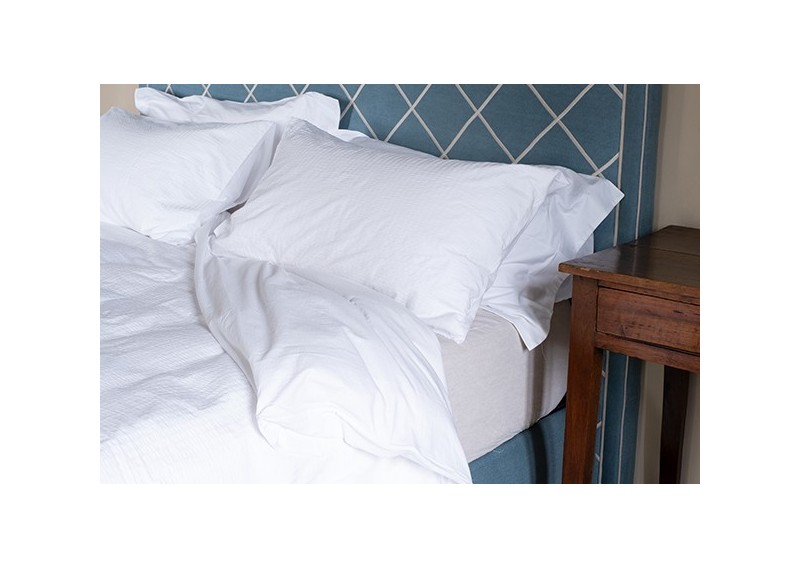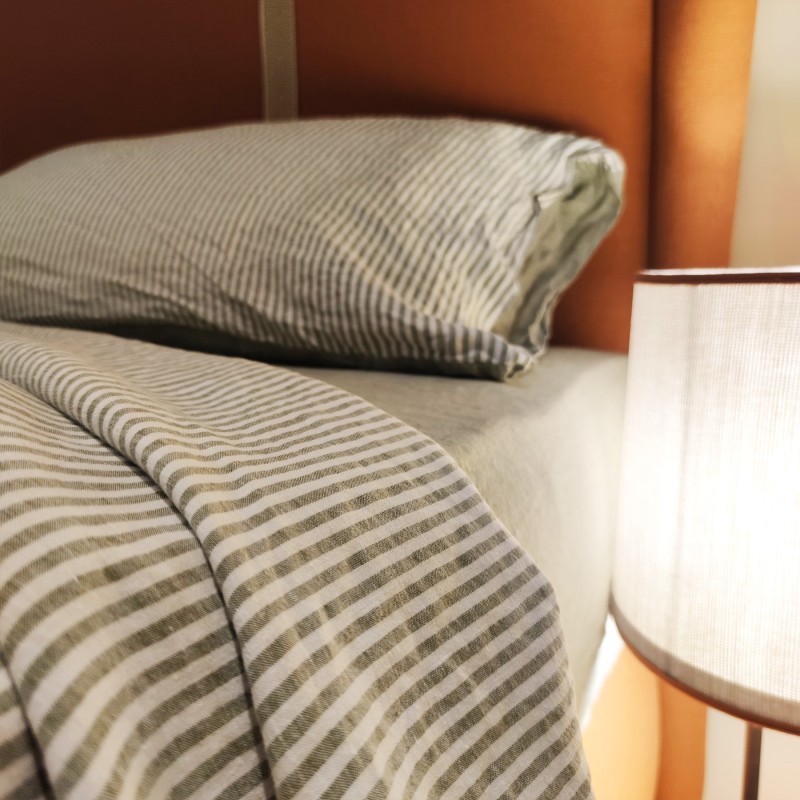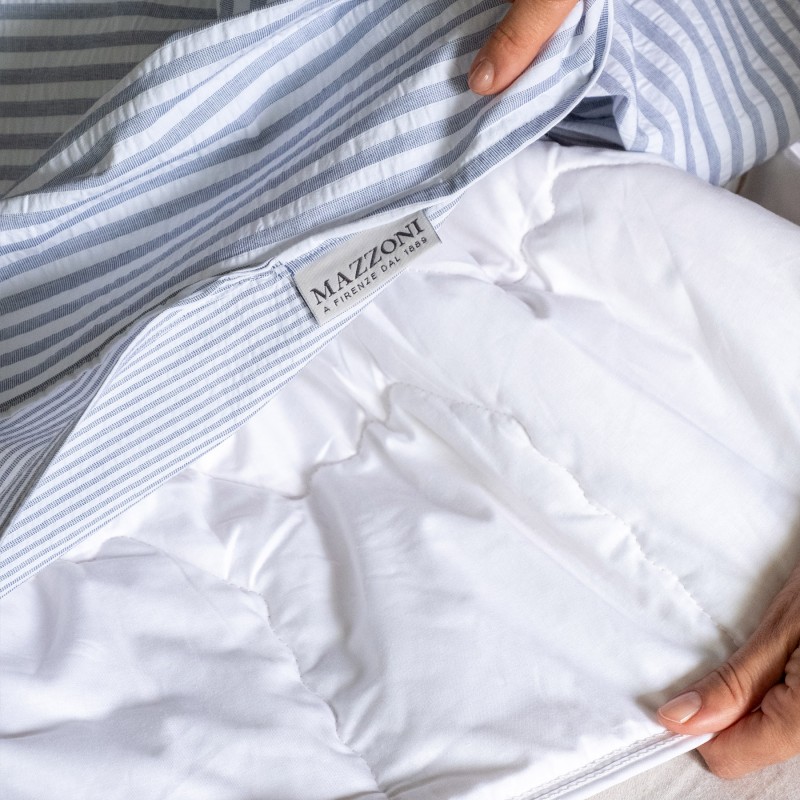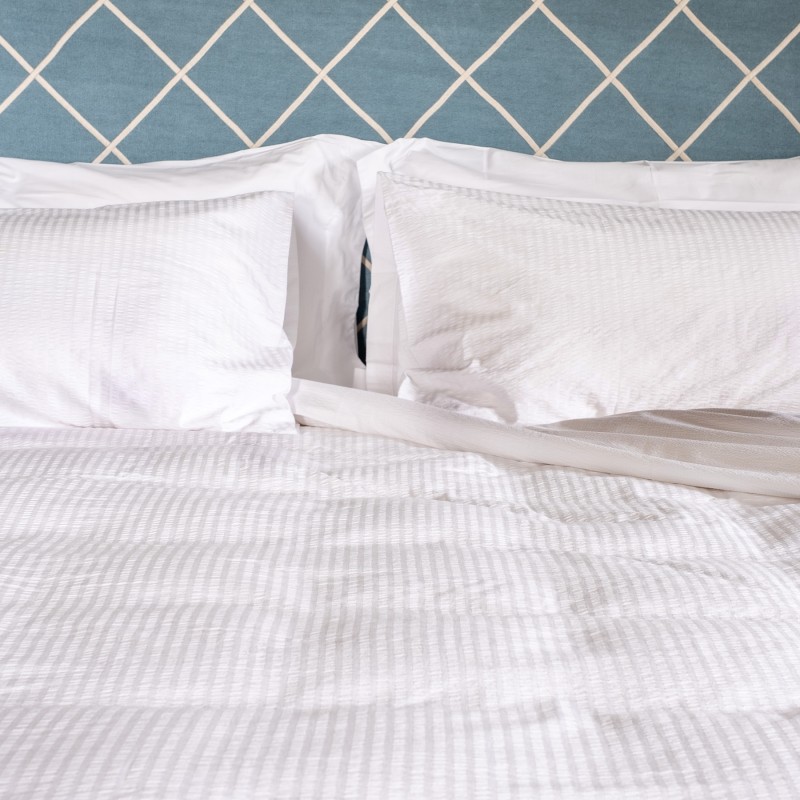Seersucker

An ancient fine fabric
The term seersucker (or clò clò) identifies a pure cotton fabric, light and embossed, which has distant origins and a fascinating history.
Made predominantly of cotton, seersucker is produced through a weaving process in which the threads are stretched differently from each other, thus creating a crinkled effect that makes it very recognizable.
The name seersucker comes from the Syrian shir or shekar, literally "milk and sugar", with clear reference to the alternation of smooth and rough, soft and rippled surfaces.
Traditionally this weaving technique was born in India, with artisanal methods and using pure cotton yarns.
Seersucker was then introduced to Europe and the United States in the 18th century through colonial trade, soon becoming popular especially in the warmer seasons, thanks to its thermoregulatory capabilities: a fabric that will enter the imagination of world fashion as symbol of exclusive summer elegance.
The small waves that characterize seersucker in fact prevent the fabric from adhering to the skin, allowing better air passage: a combination of freshness, lightness and comfort that cannot be found elsewhere.
In addition to men's and women's clothing, seersucker is used for furnishings of the house for sheets, duvet covers, curtains and furnishing accessories: it is a solution that does not require ironing, revealing itself to be surprisingly versatile and elegant.
A fabric that has crossed centuries and continents without losing its relevance and practicality, made characteristic by its crinkled surface and striped appearance: light, breathable and with a marked casual sophistication.




